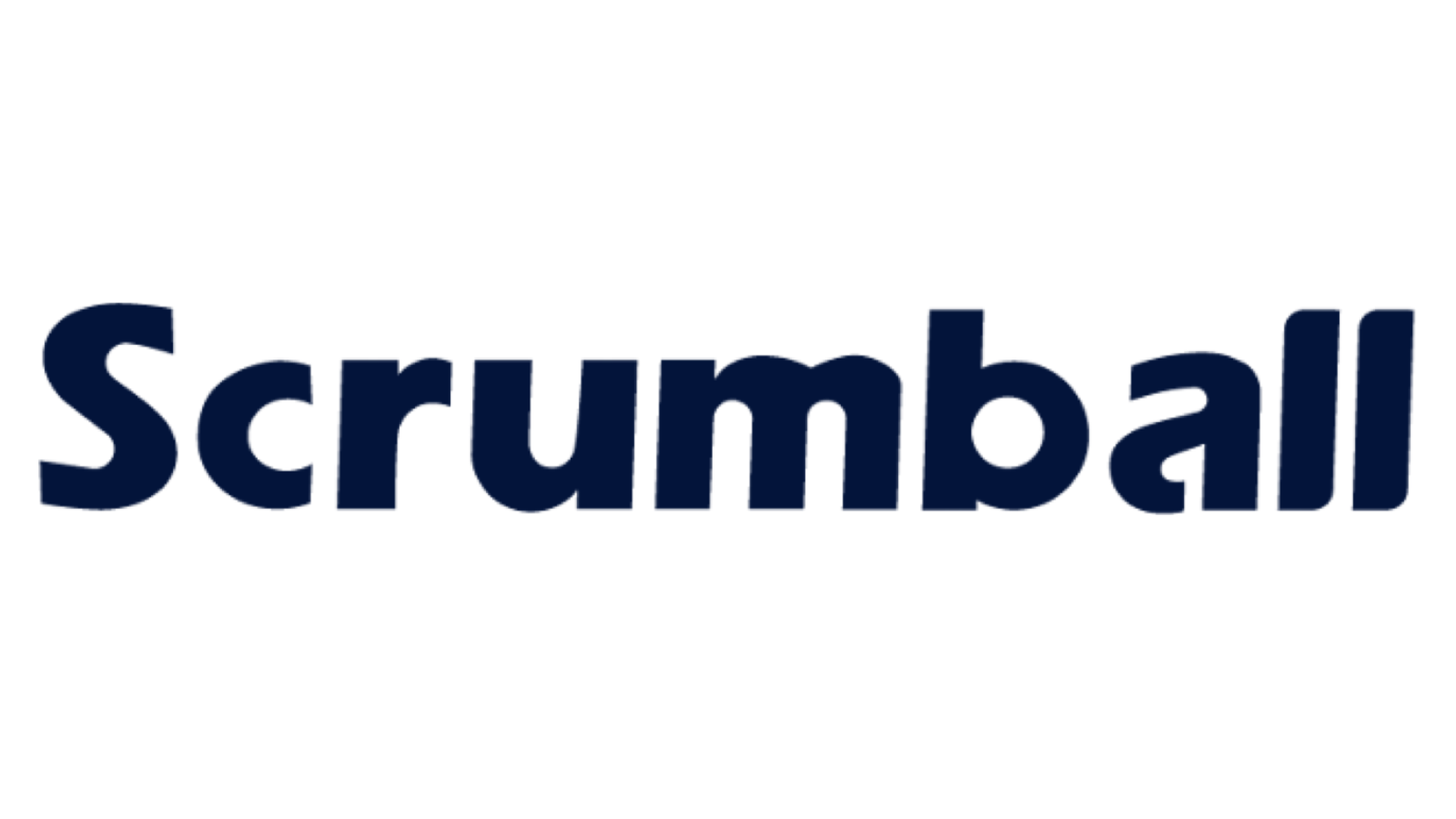A Beginner's Guide to Choosing Marketing Automation Platforms

Choosing the best marketing automation platforms can transform how you approach your marketing efforts. These tools help you streamline workflows, save time, and improve results. For instance, businesses using marketing automation see a 14.5% boost in sales productivity and an 80% rise in lead quantity. That’s a game-changer, right?
But let’s face it—picking the right platform isn’t always easy. You might struggle to identify your needs or worry about how well the platform integrates with your current tools. Over-automation can even make your customer interactions feel robotic. The key is finding a solution that fits your goals and enhances your marketing strategy without overcomplicating things. This guide will help you navigate these challenges and make an informed choice.
Understanding Marketing Automation Platforms
What Are Marketing Automation Platforms?
Marketing automation platforms are tools designed to simplify and enhance your marketing efforts. They help you automate repetitive tasks, manage customer interactions, and analyze campaign performance. These platforms connect with your existing tools, like CRM or CMS, to create a seamless workflow. Whether you're running email campaigns, tracking leads, or managing social media, these platforms ensure everything runs smoothly.
Here’s what defines the best marketing automation platforms:
- Integration with tools like CRM for better data management.
- Lead management to track prospects through the sales funnel.
- Email marketing automation with features like triggered emails.
- Social media automation for scheduling posts and monitoring engagement.
- Audience segmentation for targeted campaigns.
- Analytics and reporting for data-driven decisions.
- A/B testing to refine your strategies.
- User-friendly setup and interface.
- Security measures to protect customer data.
- Reliable vendor support for troubleshooting.
Benefits of Marketing Automation
Time-saving and efficiency
Marketing automation software takes over repetitive tasks like sending emails or scheduling posts. This frees up your time to focus on strategy and creativity. Imagine having more hours in your day to brainstorm new ideas or refine your inbound marketing strategy.
Improved lead nurturing and customer engagement
With marketing automation, you can deliver personalized content to your audience at the right time. For example, companies excelling at lead nurturing generate 50% more sales-ready leads and reduce expenses by 33%. Tailored customer engagement campaigns also improve the customer experience, making your brand more relatable.
| Statistic | Value | Source |
|---|---|---|
| Increase in sales opportunities from nurturing leads | 20% | DemandGen report |
| More sales-ready leads generated by companies excelling at lead nurturing | 50% | Forrester Research |
| Reduction in expenses for lead nurturing | 33% | Forrester Research |
Data-driven decision-making
Marketing automation platforms provide detailed analytics and reporting. You can track campaign performance, understand customer behavior, and make informed decisions. This data-driven approach ensures your marketing efforts align with your goals.
Common Applications of Marketing Automation
Email marketing campaigns
Email marketing remains one of the most effective ways to connect with your audience. Marketing automation solutions let you create targeted email campaigns based on user behavior. You can send welcome emails, follow-ups, or special offers automatically.
Social media management
Managing social media can be overwhelming. Marketing automation platforms simplify this by scheduling posts, tracking performance, and even responding to comments. This keeps your brand active and engaging without constant manual effort.
Customer segmentation and targeting
Not all customers are the same. Marketing automation helps you segment your audience based on preferences, behaviors, or demographics. This ensures your campaigns resonate with the right people, boosting engagement and conversions.
Identifying Your Marketing Needs
Assessing Your Current Marketing Strategy
Analyzing existing tools and workflows
Before diving into marketing automation platforms, take a step back and evaluate your current strategy. Ask yourself: What tools are you already using? Are they helping you achieve your goals? To assess effectiveness, follow these steps:
- Define your marketing campaigns and decide how you’ll measure success.
- Identify the channels you use, like email, social media, or paid ads.
- Track key performance indicators (KPIs) for each channel, such as click-through rates or conversions.
- Consider the short-term and long-term impact of your efforts on revenue.
This analysis will help you pinpoint what’s working and what’s not.
Identifying pain points and inefficiencies
Every marketing workflow has its challenges. Common pain points include:
- Struggling to allocate resources, especially if you’re a small team.
- Misaligned expectations about customer retention or engagement.
- Lack of executive support, which can lead to unclear priorities.
By identifying these issues, you’ll know where a marketing automation platform can make the biggest difference.
Understanding Your Target Audience
Defining audience preferences and behaviors
Your audience is at the heart of your marketing. To understand them better, use tools like Google Analytics for website traffic insights or SparkToro to uncover customer motivations. Social media analytics from platforms like Instagram can also reveal engagement trends. Surveys through tools like SurveyMonkey are another great way to gather direct feedback.
Aligning platform features with audience needs
Once you know your audience, match their preferences with the features of the best marketing automation platforms. For example, if your audience engages heavily on social media, look for platforms with robust social media management tools. If email campaigns drive results, prioritize platforms with advanced email automation.
Evaluating Your Team’s Capabilities
Considering technical expertise and resources
Think about your team’s skills. Do they have experience with marketing automation? If not, choose a platform with an intuitive interface and strong support resources. This ensures your team can hit the ground running without a steep learning curve.
Planning for implementation and training
Successful implementation requires planning. Set aside time for onboarding and training. Many marketing automation platforms offer tutorials, webinars, or even dedicated support teams to help you get started. Investing in training upfront will save you headaches later.
Pro Tip: Involve your team in the decision-making process. Their input can help you choose a platform that fits their workflow and skill set.
Key Features of the Best Marketing Automation Platforms

Essential Features
Email marketing and automation
Email marketing automation is a must-have for any marketing automation platform. It simplifies your email campaigns by automating tasks like sending welcome emails, follow-ups, and promotional offers. You can even set up an automated email workflow triggered by specific actions, such as a customer signing up or abandoning their cart. These tools also help you track email performance, reduce bounce rates, and ensure your messages reach the right audience. This feature saves time and boosts engagement, making it a cornerstone of your inbound marketing strategy.
Lead scoring and nurturing
Lead management and nurturing are critical for turning prospects into loyal customers. Marketing automation platforms let you score leads based on their behavior, like website visits or email opens. This helps you prioritize high-value leads and focus your efforts where they matter most. Nurturing these leads with personalized messages ensures they stay engaged throughout their customer journeys, increasing the chances of conversion.
Analytics and reporting
Data is the backbone of effective marketing. With analytics and reporting tools, you can monitor campaign performance, track customer behavior, and make informed decisions. These insights help you refine your strategies and align them with your goals. Whether it’s A/B testing email subject lines or analyzing social media engagement, these features give you the power to optimize your marketing efforts.
Advanced Features
CRM and third-party integrations
The best marketing automation platforms seamlessly integrate with your existing tools, like CRM systems. This ensures all your data stays connected, making it easier to manage customer relationships and streamline workflows. Third-party integrations also expand your platform’s capabilities, letting you connect with tools for social media, e-commerce, or analytics.
AI-driven personalization
AI is revolutionizing marketing automation capabilities. Features like predictive lead scoring and automated content recommendations enhance personalization and segmentation. For example, AI can suggest the best time to send emails or recommend products based on a customer’s browsing history. This level of personalization improves engagement and drives better results.
| Feature | Description |
|---|---|
| AI-Enabled Capabilities | Enhances personalization, productivity, and data insights through tools like predictive lead scoring and automated content recommendations. |
| Mobile Capabilities | Integrates SMS and in-app interactions, optimizing mobile marketing strategies. |
| Website Visitor Tracking | Provides insights into user behavior through analytics tools, improving website performance. |
| Automated Lead Assignment | Streamlines the lead assignment process, matching leads with sales reps efficiently. |
Multi-channel campaign management
Marketing today spans multiple channels, from email to social media to SMS. Multi-channel campaign management tools let you coordinate your efforts across these platforms. You can create cohesive campaigns that deliver consistent messaging, no matter where your audience interacts with your brand.
Scalability and Customization
Adapting to business growth
As your business grows, your marketing needs will evolve. Marketing automation solutions can scale with you. For instance, you can set up automated email campaigns for new customer segments or expand to other channels like SMS or WhatsApp. These platforms also support complex cross-channel campaigns, ensuring you stay ahead as your audience and goals grow.
- Automatically send web push notifications with relevant product suggestions.
- Trigger automations based on customer actions, like opening a page or adding items to their cart.
- Expand campaigns to include discount codes via SMS or WhatsApp.
Customizable workflows and templates
Customizable workflows make it easy to tailor your marketing automation to your unique needs. You can create automated workflows that align with your processes, ensuring efficiency and consistency. Pre-designed templates save time and maintain branding across all customer interactions. Plus, they help you stay compliant with regulations by using pre-approved formats.
Pro Tip: Customizable workflows enhance customer experiences by delivering personalized communication at every touchpoint.
Evaluating Marketing Automation Platforms
Integration and Compatibility
Seamless integration with existing tools
When choosing marketing automation platforms, you need to ensure they integrate smoothly with your existing tools. A platform that connects with your CRM, email marketing software, or analytics tools can save you time and reduce manual work. This integration creates a unified system where data flows seamlessly, helping you track leads and manage campaigns more effectively. However, businesses often face challenges like marketing and sales silos or relying on subpar data. Addressing these issues early ensures your platform works harmoniously with your current setup.
API support for custom solutions
If your business has unique needs, API support is a game-changer. It allows you to build custom solutions that align with your workflows. For example, you can automate lead nurturing processes or create personalized customer journeys. Platforms with robust API capabilities give you the flexibility to scale and adapt as your marketing strategy evolves.
Ease of Use
Intuitive interface and navigation
A user-friendly interface is essential. You don’t want to spend hours figuring out how to set up a campaign or analyze data. Look for platforms with simple navigation and clear instructions. This makes it easier for your team to adopt the tool and start using its marketing automation capabilities right away. A clutter-free dashboard and drag-and-drop features can make a big difference in your day-to-day tasks.
Availability of training and support resources
Even the most intuitive platforms require some learning. Check if the platform offers training materials like tutorials, webinars, or a knowledge base. Access to customer support is equally important. Whether it’s live chat, email, or phone support, having help when you need it ensures smooth implementation and ongoing success.
Pro Tip: Involve your team in testing the platform. Their feedback can help you gauge ease of use and identify potential challenges.
Pricing and ROI
Subscription models and hidden costs
Most marketing automation platforms use a subscription model, billed monthly or annually. Pricing often depends on the number of users and features you choose. While this flexibility is great, watch out for hidden costs like additional fees for advanced modules, training, or implementation. These can add up quickly and impact your return on investment.
Evaluating value for money
To determine if a platform is worth the cost, consider its core features and scalability. Does it meet your marketing needs? Will it grow with your business? Companies typically see an average ROI of $5.44 for every dollar spent on marketing automation within three years. Most recover their investment in under six months. Prioritize platforms that align with your goals and offer strong support. Remember, the cheapest option isn’t always the best. Focus on value for money instead.
Customer Support and Community
Access to technical support
When you’re using a marketing automation platform, technical hiccups can happen. That’s why having reliable technical support is a must. You need a platform that offers quick and effective solutions when things go wrong. Look for platforms with multiple support options, like live chat, email, or phone support. These options ensure you can get help in the way that works best for you.
Some platforms even provide dedicated account managers or 24/7 support. This can be a lifesaver if you’re running campaigns across different time zones. Before committing to a platform, check their response times and availability. You don’t want to be stuck waiting for hours when you’re facing an urgent issue.
Pro Tip: Test the support team during your trial period. Ask a few questions to see how fast and helpful their responses are. This will give you a good idea of what to expect.
User forums and knowledge bases
Sometimes, you don’t need to contact support. You just need a quick answer or a step-by-step guide. That’s where user forums and knowledge bases come in handy. Many platforms have online communities where users share tips, troubleshoot issues, and discuss best practices. These forums can be a goldmine of information.
Knowledge bases are another great resource. They usually include FAQs, how-to articles, and video tutorials. These tools let you solve problems on your own, saving you time and effort. Plus, they’re perfect for learning new features or improving your skills.
Did You Know? Platforms with active user communities often release updates based on user feedback. Being part of these forums can give you a voice in shaping the platform’s future.
By choosing a platform with strong support and an active community, you’ll feel confident tackling any challenges that come your way.
Step-by-Step Guide to Choosing the Right Marketing Automation Platform

Define Your Goals and Budget
Setting clear objectives for marketing automation
Before diving into marketing automation platforms, you need to know exactly what you want to achieve. Are you looking to generate more leads, improve customer engagement, or streamline your campaigns? Clear goals will guide your decision-making and help you focus on the features that matter most.
Before you get started with automating any marketing workflow, you must set well-defined goals and objectives. This is vital in ensuring your efforts are focused on achieving the desired outcomes. Make sure to set realistic and measurable goals. Break larger goals down into smaller, achievable, and specific objectives.
For example:
- Secure an additional 100 leads monthly through targeted marketing campaigns by the year-end.
- Boost lead acquisition in core market segments by 15% before the year concludes.
- Increase lead acquisition by 20% in the next five months.
Determining financial constraints
Budget plays a big role in your decision. Start by identifying how much you can spend on a platform. Don’t forget to account for hidden costs like training, implementation, or advanced features. A clear budget ensures you don’t overspend while still getting the tools you need.
Research and Shortlist Platforms
Comparing features, reviews, and case studies
Once you’ve set your goals, it’s time to research. Look for platforms that align with your needs. Pay attention to:
- Customization of reporting to track ROI effectively.
- Migration processes to ensure smooth data transfer.
- Cost considerations, including hidden fees.
- Customer support quality based on subscription tiers.
Reading reviews and case studies can also give you insights into how these platforms perform in real-world scenarios.
Requesting demos or free trials
Demos and free trials are your best friends during this stage. They let you explore the platform’s features and see if it fits your workflow.
- Demos help you understand user needs and whether the platform aligns with your job-to-be-done.
- Free trials allow you to test features hands-on, reducing research time.
- Direct conversations during demos reveal tailored solutions for your pain points.
- Demos are effective for conversion and increasing customer lifetime value.
- They allow users to get answers to their questions quickly.
- Combining free trials with demos accelerates understanding and satisfaction.
Test and Evaluate Platforms
Using trial periods to assess functionality
Trial periods are your chance to dig deeper. Test the platform’s core features like email automation, lead scoring, and analytics. Check how well it integrates with your existing tools. Does it simplify your campaigns or add complexity? Use this time to ensure the platform meets your expectations.
Gathering feedback from your team
Your team’s input is invaluable. Use tools like virtual whiteboards or messaging apps to collect feedback. One-on-one discussions can also uncover unique perspectives.
| Method | Description |
|---|---|
| Use a virtual whiteboard | Facilitate real-time discussions and brainstorming with a shared canvas. |
| Facilitate one-on-one discussions | Set up quick 1:1 meetings to gather individual feedback and provide context. |
| Use visual collaboration apps | Allow team members to visualize and understand projects asynchronously. |
| Use messaging apps | Encourage casual and organic feedback through platforms like Slack or Microsoft Teams. |
| Send out surveys or polls | Collect anonymous feedback to ensure all voices are heard. |
Be transparent about how you’ll use their feedback. This builds trust and ensures everyone feels involved in the decision-making process.
Implement and Monitor
Planning a smooth implementation process
Getting your marketing automation platform up and running doesn’t have to feel overwhelming. A well-thought-out plan can make the process seamless. Start by setting up user events in your product code. This ensures the platform can track customer actions effectively. Next, add the automation software script to your website or app. If you’re using Google Tag Manager, include the script there too.
Integration with your CRM is another crucial step. This connects your customer data with the platform, making it easier to manage leads and personalize campaigns. Before launching, take time to review your buyer personas and map out their journeys. A content audit will also help you identify gaps and ensure your messaging aligns with customer needs.
Don’t forget to train your team. Familiarize them with the platform’s features and best practices. A soft launch is a great way to test the system without going all in. Monitor its performance during this phase and make adjustments as needed. Regular evaluations will keep your automation processes running smoothly and aligned with your goals.
Tracking performance and optimizing usage
Once your platform is live, tracking the right metrics is key to optimizing its usage. Start with open rates to see how many recipients are engaging with your email marketing efforts. Click-through rates (CTR) will show you how effective your content is at driving action. Conversion rates are another critical metric, helping you measure how many users complete desired actions like signing up or making a purchase.
Keep an eye on bounce rates to identify delivery issues and unsubscribe rates to gauge audience satisfaction. These insights will help you refine your campaigns and improve overall performance. By consistently monitoring these metrics, you’ll uncover opportunities to enhance your strategy and maximize the platform’s value.
Pro Tip: Schedule regular check-ins with your team to review performance data. This keeps everyone aligned and ensures you’re making data-driven decisions.
Choosing the right marketing automation platform can transform your marketing efforts and set your business up for success. By understanding your needs, evaluating features, and testing platforms, you’ll find a solution that fits your goals.
Here’s a quick recap to guide you:
- Ease of Use: Pick a platform with an intuitive interface to get started quickly.
- Integration Capabilities: Ensure it works seamlessly with your existing tools.
- Features and Functionality: Focus on the features that matter most to your business.
- Scalability: Choose a platform that grows with your business.
- Customer Support: Reliable support is essential for smooth operations.
Involve your team in the process and take advantage of free trials to test platforms before committing. Don’t rush—select a tool that aligns with your long-term goals. With the best marketing automation platforms, you’ll save time, engage customers better, and make smarter decisions.
Pro Tip: Start small, track your results, and scale as you grow. The right platform will evolve with your business and help you achieve your marketing objectives.
FAQ
What is the best way to start using a marketing automation platform?
Start by defining your goals. Know what you want to achieve, like generating leads or improving engagement. Then, test platforms with free trials. Focus on ease of use and integration with your current tools. Involve your team for smoother adoption.
Pro Tip: Start small and scale as you grow.
How do I know if a platform fits my business?
Look for features that match your needs. If you rely on email campaigns, prioritize email automation. Check integration options with your existing tools. Use trial periods to test functionality and gather feedback from your team.
Did You Know? Most businesses recover their investment in marketing automation within six months.
Are marketing automation platforms suitable for small businesses?
Absolutely! Many platforms offer affordable plans tailored for small businesses. They help you save time, nurture leads, and improve customer engagement. Choose a platform with an intuitive interface and scalable features to grow with your business.
What are the hidden costs of marketing automation platforms?
Hidden costs can include training, implementation, advanced features, or additional users. Always check the pricing structure and ask about extra fees during demos. This ensures you stay within budget while getting the features you need.
How can I ensure my team adopts the platform successfully?
Involve your team early in the decision-making process. Choose a user-friendly platform and provide training resources like tutorials or webinars. Regularly check in with your team to address challenges and gather feedback.
Pro Tip: A soft launch helps your team get comfortable before full implementation.
See Also
Comprehensive Tips for Choosing the Right Influencer Platform
Navigating Influencer Marketing Platforms for Growing Enterprises
Seven Key Steps to Determine Your Content Marketing ROI
